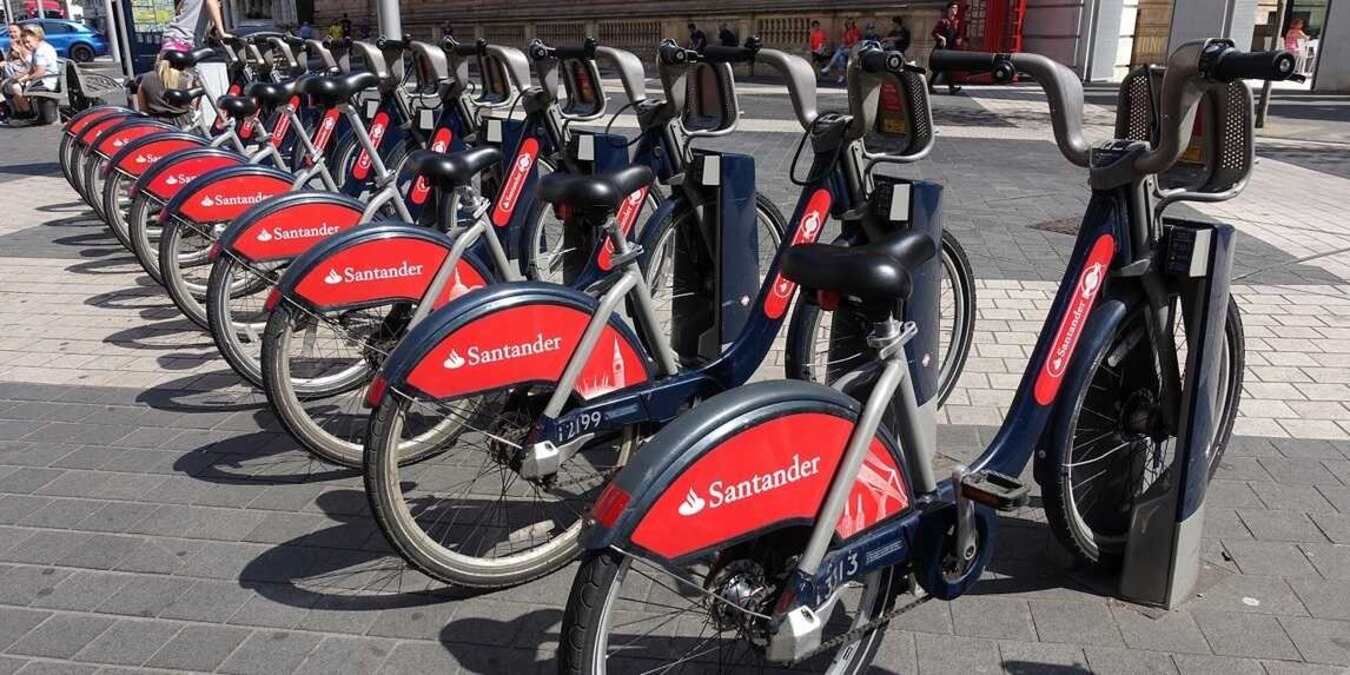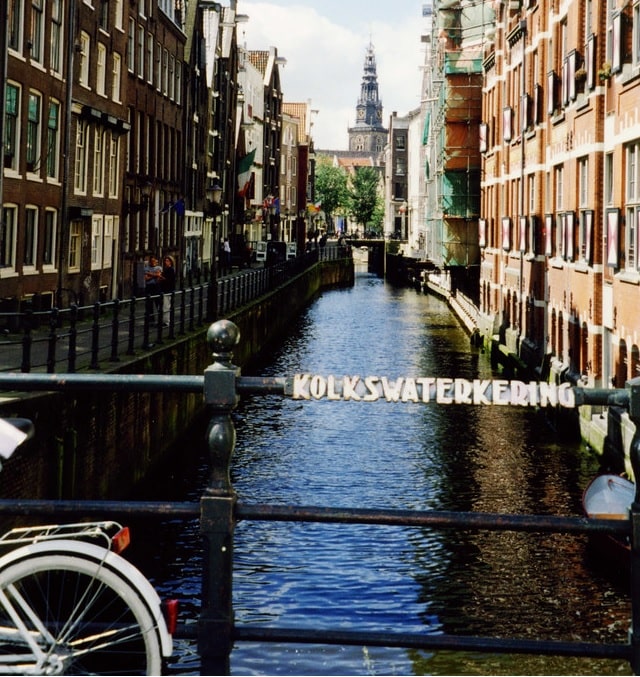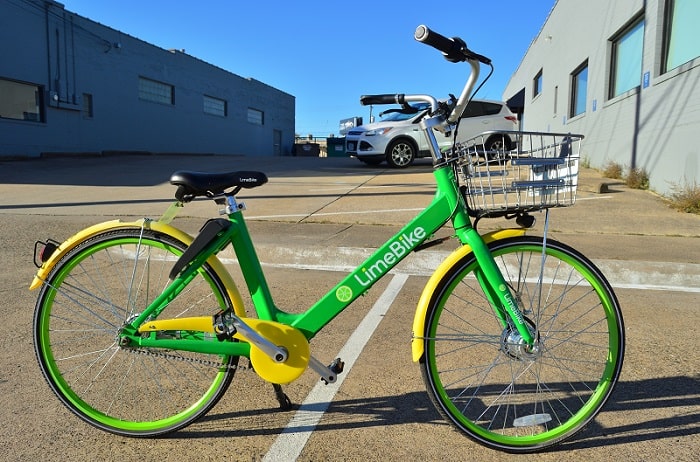
City traffic creates air pollution. One solution to this problem is to encourage city dwellers to use public transport, thus reducing the number of vehicles on the road. Another method of cutting down the amount of carbon dioxide that gets pumped into the air is to encourage people to use bicycles.
The cost of buying and maintaining a bike and the ease with which thieves can take them puts many people off the idea of riding around the city. “Shared bike” schemes aim to remove most of those obstacles, and now IoT is making those schemes successful.
Shared Bike Schemes
The first shared bike system was created in Amsterdam in 1965. A volunteer group of environmentalists, called Provo, raised enough money to buy fifty bicycles, which they painted white and just left on the pavements of the city. The group publicized their scheme that allowed anyone to pick up a white bike, ride it to where they wanted to be and then just leave it there for anyone else to ride off somewhere else.

The aim of shared bike schemes is to remove the inconvenience of having to return the bike to the place that it was originally encountered. The White Bike scheme recognized that renting out bikes didn’t suit the busy lifestyles of the people that the group wanted to attract. Making the bikes free to use was meant to make bike riding more appealing and also remove costly administration processes.
The scheme failed because most of those white bikes ended up being dumped in canals or getting stolen and disguised with a new paint job. The simple economic, psychological process that equals cost with value doomed the scheme into becoming a quick supplier of trash.
The White Bike project shows that making bicycles available for free just doesn’t work. Payments have to be processed, and renters need to be tracked.
An intermediate, authority-run scheme provided a half-way stage in the solution to bike sharing. City transport authorities provided distinctively-designed bikes that could be collected and dropped off at different docking stations. An initial payment unlocked the bike, and a city-wide data network embedded in the docking stations recorded the total rental period no matter which docking station the returned bike was locked into.
Docked-bike systems are only successful if the local authority installs a lot of docking stations around the city. People are reluctant to walk far to a collection point and won’t use the system if there isn’t a docking station close to their intended destination. The large amount of infrastructure needed for a successful docked-bike sharing scheme means that these systems require large public subsidies, and the low charges needed to attract customers means that initial setup costs never get recovered.
How IoT Is Changing the Shared Bike Schemes
The use of trackers on the bikes, smart locks, and account apps have made this green transport plan economically viable. Shared bike schemes are now being implemented in the private sector, attracting the marketing skills and technology investments that only entrepreneurs can summon.
The phone-centered IoT shared-bike concept was first launched by Deutsche Bahn in 2000. The bikes have an integrated lock, which can be unlocked with a code that is sent to the user’s phone. The codes for the smart locks can be changed on command by a remote controller, thus eradicating the need for kiosk staff of docking stations. This form of shared bike service is known as “dockless bikes.”
Economic viability has taken bike sharing into the public sector. However, the desire to encourage the public to take up the scheme also drives transport authority involvement. The public sector hasn’t been banned from operating shared bike schemes, but now they have private sector competition.
For example, bike users in London can opt for Santander Cycles. This is an official service of the local transport authority, but its management is contracted out to a private-sector company, Servco, and subsidized through sponsorship from Santander Bank. Alternatively, London’s riders can opt for a Lime E bike, which is a private-sector enterprise.

Both Santander Cycles and Lime combat theft and dumping through the deployment of IoT GPS trackers in the bikes and the use of smart locks. Financial responsibility on the part of the users and the traceability of riders is enforced through an account registration process, which is tied to a smartphone. The Santander Cycles system requires docking stations, and each account holder is given a physical key that unlocks any bike rack in the city. The key is a smart device that identifies each account holder.
The Santander Cycles system is not economically independent and relies on public subsidies and the sponsorship deal with Santander Bank to keep prices accessible. However, the subsidy provided by Transport for London runs at about 16 percent of the operating costs of the scheme. This is the same amount that the authority “loses” on all public transport in London, including the famous London Underground.
Lime E bikes cut costs and aims to be financially independent by deploying more IoT technology than is enjoyed by Santander Cycles. The system deploys a smartphone app that enables riders to locate nearby available bikes. This removes the need for a docking station and, hopefully, makes the bikes’ availability more widely spread.
Lime is a US company that has commercial shared bike schemes in other cities in the world, including San Francisco in the USA and Berlin in Germany. The company is already worth $1.1 billion, proving that private-sector shared bike schemes can be lucrative for investors.
Lime doesn’t have the London shared bike market to itself. The city is also served by the dockless Mobike, Freebike, Urbo, and Jump systems. Jump is a division of taxi giant Uber, which shows that big money is now getting interested in bike-sharing possibilities.
What do you think of the shared bike schemes? Will it work to create a green city?
Image Credits: Santander Cycles, Amsterdam, canal, Kolkwaterkering”, Lime Bike








